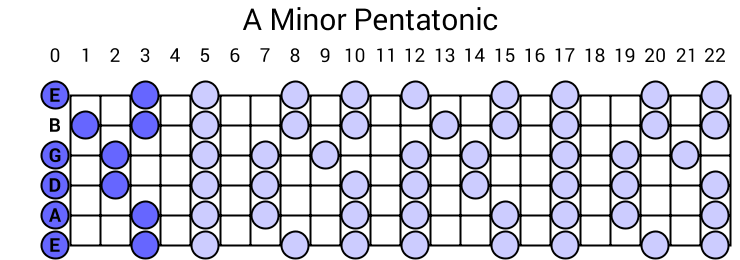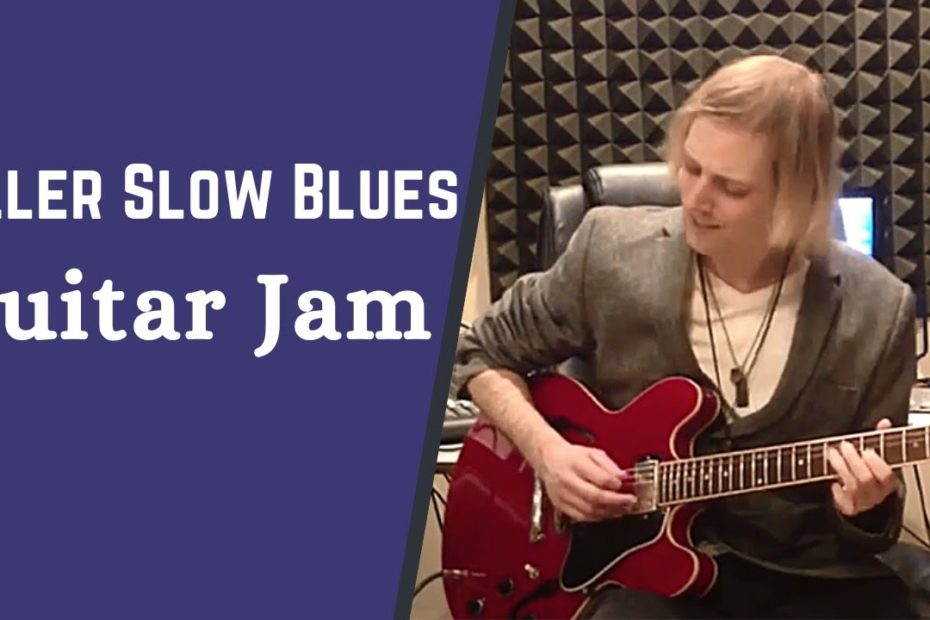One of the mystifying things about guitar playing and music in general is improvisation. I remember watching guitar players effortlessly going from note to note and being baffled as to how they were doing it. How is it possible to know what you want to hear and then just recreate it with your instrument? It seemed like black magic.
Well, as it turns out it wasn’t quite that magical in reality. To start playing your own rudimentary improvised solo you need to know the basics of two things:
- Chord progressions
- The pentatonic scale
Let’s begin.
Without going into too much detail a chord progressions is just a sequence of chords played in a set order. Let’s take for example the chords Am, F, C, G. If you play them in that order you will have a great sounding chord progression and that’s that.
The first intuition I had was that there must be hundreds of chord progressions and that it would take a lifetime to learn them. Again, turns out it really isn’t that complicated in reality. With only a few progressions you can play almost 80% of all of the songs you’ve ever heard.
The thing that confused me the most in the beginning was the fact that all of the chord progressions can be played in all of the keys. This means that the exact same progression has different names for the chords when you play it at a higher/lower pitch. So for example – Am, F, C, G – turn into – Em, C, G, D – when you play it 7 semitones (frets) higher. Since there are 12 different keys, there are also 12 different ways to write the exact same chord progression. Don’t let this fake complexity fool you. Always look at the underlaying sequence of chords and you’ll notice that in most of the cases popular songs have the exact same chord progressions hidden underneath the different key signatures.
I suggest that when your learning new progressions and scales, always use the same key. For example the key of A minor. It keeps things simple and it makes it easier to analyze the things that you’re learning. Afterwards it’s easy to transfer your knowledge to the rest of the key signatures, when you want to do it.
Here are some sample chord progressions:
C | G | Am | F F | C | G C | Am | Dm | G Am | G | F Am | F | C | G
Here is a sound clip for the last progression on the list (Am | F | C | G):
Now that we have the rhythm side covered, next we will focus on playing a solo.
As was the case with chord progressions, solo playing is also much more simple than what it seems like on the surface. The thing to know here is the pentatonic scale. It’s a fancy name for a very simple concept. For each of the key signatures there are five notes that you can play in pretty much any order you want to and the result will always sound more or less like it should. Just five notes. They are all you need to know to begin.
Lets use the A minor pentatonic, the individual notes here are A, C, D, E, G. There are a lot of places on the fretboard where you can find these same notes and it’s once again one of those things that makes the whole thing seem more complicated than it actually is. When you see someone shredding around their fretboard playing a rock solo, chances are that they are playing the same five notes over and over. Many of the great guitar solos of history use these notes and nothing else. So how do you go about using the pentatonic scale in practice? Well, arguably the best way is to use the “box” approach:

Use these notes on the fretboard and don’t worry about the rest of the positions/notes. Put a backing track playing an A minor chord progressions (for example the one included in this post) on the background and start going through the position in the picture. Don’t worry about not sounding like Gilmour or Slash, just play trough the notes and get a feel for the position. It will feel clunky and awkward at first. It will feel like you’re not progressing. This is not the case. Just keep modifying the order of notes and try to find good sounding licks. Look for inspiration in the other music your listening to. If you hear a good sounding melody or a chord progression, try to find out how it works in A minor and try to create a lick out of it. It’s like building a vocabulary one word at a time. Keep doing it and soon you’ll have your own language.



